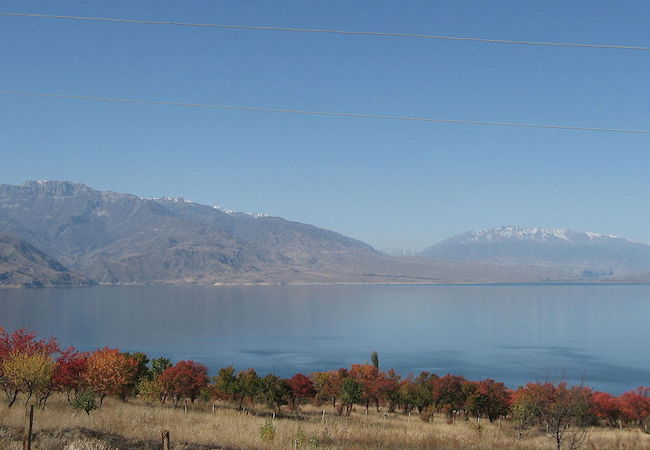
By Shahzadi Tooba Hussain Syed
The Central Asia-South Asia (CASA)-1000 project has been launched by the leaders of Pakistan, Tajikistan, Afghanistan and Kyrgyzstan on May 12, marking an important milestone for the integration of the two regions. The 1,200km, 1,300MW electricity link called CASA-1000 is set to connect the four countries by 2018. It aims to provide surplus electricity from Central Asia to the two countries in the southern part of the continent, alleviating their energy crisis. Tajikistan is expected to supply more than 75 per cent of the electricity envisaged by the project, while neighboring Kyrgyzstan will supply the remainder. Afghanistan will be receiving 300MW of electricity and Pakistan the remaining 1,000MW.
The CASA-1000 represents landmark cooperation between Kyrgyzstan, Tajikistan, Afghanistan and Pakistan. It also holds the promise to establish and develop inter regional linkages between Central and South Asia. The project devised on the similar lines as the North American grid spanning over 340,000km and European power system traversing a territory of 230,000km, though ambitious but seems achievable. A high level inter-governmental committee has already been established to evolve the modalities for its implementation, resolve technical issues and devise rules and regulations. Hydroelectricity can play an important complementary role, in particular for Pakistan, due to the substantive price differential between cheap hydroelectricity in Central Asia and expensive petroleum-based power generation in Pakistan.
Despite the pivotal role played by gas and challenges faced by hydropower, Kyrgyzstan and Tajikistan could serve as an additional source of seasonal peak-load supplies of hydroelectricity to Pakistan.
Tajikistan alone could produce 527 billion KWh per year of electricity from its natural hydropower potential, which is still significantly underutilized. It is expected that Tajikistan’s hydroelectricity production will only reach 26.4 billion KWh in 2015. Even this “modest” output will allow Dushanbe to export up to 5 billion KWh per year by 2015. Tajikistan, as a major hydroelectricity actor, should become one of the key electricity providers for CASA 1000. Hydropower supplies from Central Asia can only play a supplementary role when compared to natural gas supplies from Turkmenistan. The amount of energy which can be supplied via CASA 1000 is much less significant than gas delivered via TAPI. Furthermore, it is too early to say how much progress Kyrgyzstan and Tajikistan will make with the development of their hydropower potential.
Kyrgyzstan has the third largest hydropower potential (142 billion KWh) of the former Soviet republics after Russia and Tajikistan. Hydropower largely dominates the electricity mix in this country and provides numerous opportunities for export. Electricity exports are expected to rise from 1.47 billion KWh in 2010 to 6.9 billion KWh in 2020, and some of the electricity surplus can be shipped via CASA 1000 to Afghanistan and Pakistan. Thanks to its developed nuclear and hydropower sectors, Kazakhstan produces electricity at $8 to $15 per MWh. In Kyrgyzstan and Tajikistan, where electricity is predominately produced via hydropower, the cost of electricity production varies from $10/$15 to $40 per MWh, with the lower range reflecting the cost of hydropower and the higher range the cost of coal-fired thermal electricity.
In Pakistan, the cost of electricity production ranges respectively from $25 to $350 per MWh and $65 to $150 per MWh. The lower range reflects the production costs of hydropower and the higher range the cost of electricity produced from oil and diesel. Since electricity generation based on oil and diesel Central Asian electricity sold to Islamabad at a significant discount, as compared to the electricity produced by oil-fired power plants, would allow Pakistan to gain access to considerably cheaper electricity. These considerations underline the relevance for the CASA 1000 project, particularly for Pakistan. Electricity flows through CASA 1000 from Tajikistan and Kyrgyzstan will also reduce the demand for new power stations in Pakistan. The country can save on construction costs. In addition, if Islamabad can increase its gas imports, it will have more leverage in price negotiations with Tajikistan and Kyrgyzstan for electricity supplies generated by hydropower. Turkmen gas used in Pakistan’s power sector would bring electricity prices down, thus forcing Central Asia hydropower producers to keep their electricity export prices relatively low.
Security challenges, however, remain the biggest challenge. According to an editorial published in Express Tribune, Afghanistan and Pakistan have serious problems to solve at the Torkham border crossing between the two countries remaining shut for three successive days, indicating the poor state of bilateral relations. Trade issues have remained hostage to the thorny bilateral relationship with accusations flying from both sides. Pakistan and Afghanistan need to focus on the greater good if CASA-1000 is to be successful. But when security challenges trump whatever good there is to be had, this seems like a difficult task. The World Bank has already admitted that security remains the biggest challenge to this project. Troublemakers will look for every opportunity to create hurdles for the project’s implementation. Both countries need to overcome this highly troublesome aspect through mutual cooperation and bridge the trust deficit that exists. Perhaps, if all parties realize that a peaceful, prosperous future for the region lies in greater inter-dependence, they might start working for each other’s mutual benefit. As of now, the precarious security situation in Afghanistan and its far-reaching impact on the region remain the biggest hurdle in the way of CASA-1000’s successful completion.




